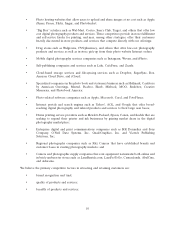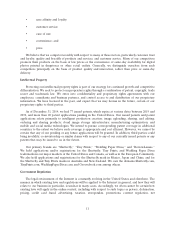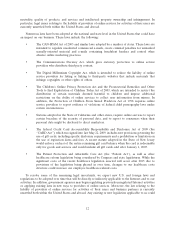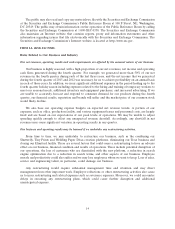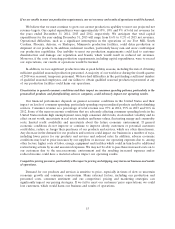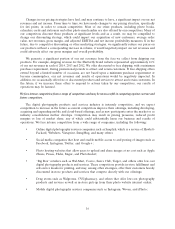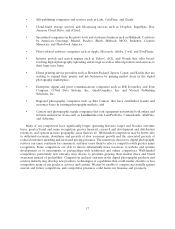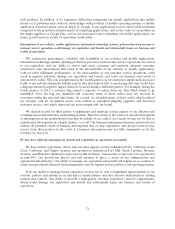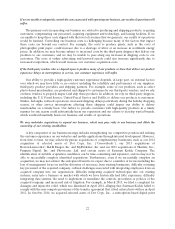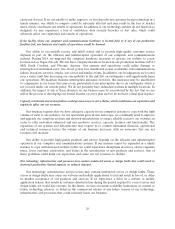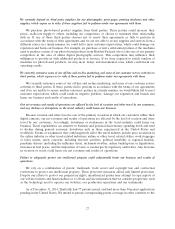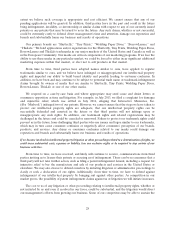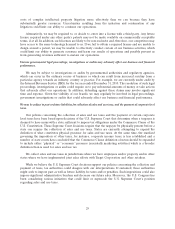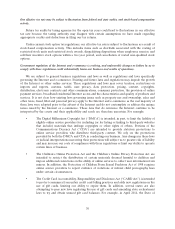Shutterfly 2014 Annual Report Download - page 21
Download and view the complete annual report
Please find page 21 of the 2014 Shutterfly annual report below. You can navigate through the pages in the report by either clicking on the pages listed below, or by using the keyword search tool below to find specific information within the annual report.Our sales to enterprise customers can be unpredictable and a decrease in Enterprise revenue could adversely impact
total net revenue.
Enterprise revenue as a percentage of total net revenue was 5% in 2014, 5% in 2013 and 4% in 2012.
Our Enterprise revenue is highly concentrated in a few customers and the loss of one or more of our
enterprise customers could decrease Enterprise revenue and adversely impact our total net revenue. Our
enterprise customers also come from a wide variety of industries, creating new regulatory compliance
issues for us as well as the need to maintain security for third party data. These enterprise customers also
demand strict security requirements and specified service levels. If we fail to meet these service levels, we
may not only lose an enterprise customer but may have to pay punitive costs for such failures. As our
Enterprise business grows, issues that impact our sales to enterprise customers may have a negative impact
on our total sales. Our core business is consumer focused and we have less experience managing sales to
enterprise customers and may not sell as successfully to enterprise customers, who often have long sales
cycles, long implementation periods and significant upfront costs. To compete effectively in the enterprise
market, we have in the past, and may in the future, be forced to offer significant discounts to large
enterprise customers at lower margins and/or reduce or withdraw from existing relationships with smaller
enterprise customers, which could negatively impact our net revenues and could adversely affect our gross
margins and overall profitability.
If we are not able to reliably meet our technology, data storage and management requirements, our customers may
become dissatisfied with our service and our reputation and brands could be harmed.
As a part of our current business model, we offer our customers free unlimited online storage and
sharing of photographs and, as a result, must store and manage many petabytes of data. This policy results
in immense system requirements and substantial ongoing technological challenges, both of which are
expected to continue to increase over time. If we are not able to reliably meet these data storage and
management requirements, we could have disruptions in services which could impair customer satisfaction,
damage our reputation and brands, and lead to reduced net revenues and increased expenses. Moreover, if
the cost of meeting these data storage and management requirements exceeds our expectations, our results
of operations would be harmed. For example, after massive flooding shut down major hard disk drive
production sites in Thailand, our ability to timely acquire data storage products was adversely affected.
Our data storage system could suffer damage or interruption from human error, fire, flood, power loss,
telecommunications failure, break-ins, terrorist attacks, acts of war and similar events. In addition, some of
our corporate data center infrastructure is located near a major fault line, increasing our susceptibility to
the risk that an earthquake could significantly harm our data storage system. If we experience disruption to
our redundant systems located at our data storage center, such disruption could result in the deletion or
corruption of customers’ stored images, which could impair customer satisfaction and lead to decreased
revenues.
An increasing number of our customers are using smartphones, tablets and other mobile devices to order products
and access services. If we are unable to develop mobile applications that are adopted by our customers or if we are
unable to generate revenue from our mobile applications, our results of operations and business could be adversely
affected.
The number of people who access information about our services and our website through mobile
devices, including smartphones and handheld tablets or computers, has increased significantly in recent
years and is expected to continue increasing. As new mobile devices and platforms are released, it is
difficult to predict the problems we may encounter in developing products for these alternative devices and
platforms, and we may need to devote significant resources to the creation, support, and maintenance of
20


